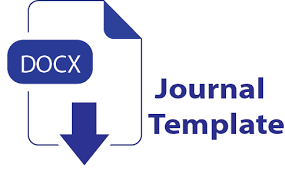Uji Kebocoran Apron Menggunakan Pesawat Sinar-X Fluoroskopi Di RSUD M. Natsir Solok Tahun 2021
.
DOI:
https://doi.org/10.38215/jtkes.v4i2.74Keywords:
Apron, Fluoroscopy, LeakageAbstract
The Apron is a lead apron to protect the body from radiation hazards, to reduce exposure to fluoroscopy radiation, and made of lead as a shield. Based on observations, the number of aprons was seven, purchased in 2011 and 2012. The apron was placed on a small table, and the wrong apron was found. Seven of the aprons, one of which was on the first apron, were suspected to have been damaged due to the wrong way of storing the apron and the researcher noticed kinks in the suspected apron. This type of research is quantitative, in the Radiology Unit of RSUD. Mohammad Natsir Solok from January 2021. Population 7 apron, sample 7 apron, data processing by measuring using tools available in fluoroscopy, data analysis compared with Lambert and McKeon (2001) theory. The results showed that the leak in the upper one apron was 51.54 mm2, the lower part 38.21 mm2 in the lower two apron 51.43 mm2, the third apron in the middle right front area was 21.12 mm2, in the lower right front area 1.664,87 mm2, at the rear center area 1,435.57 mm2, the top five rear area apron 6.97 mm2, at the rear center area 26.98 mm2
Downloads
References
Awaludin, R. (2011). Radioisotop Teknisum-99m dan Kegunaannya. Buletin Alara BATAN, 61-65.
Dianasari, & Koesyanto. (2017). Penerapan Manajemen Keselamatan Radiasi di Instalasi Radiologi Rumah Sakit. Jurnal Universitas Negeri Semarang.
Fernanda, A. R. (2015, Februari 17). Diambil kembali dari Hubungan Kualitas Pelayanan terhadap kepuasan konsumen di laboratorium Prodia Bandung: http://repository.widyatama.ac.id/xmlui/handle/123456789/2754
Grover, K. K. (2002). Protection Againt Radiation Hazard: Regulatory Bodies, Safety Norm, Doses Limits and Protection Devices. Journal Indian Radiology and Imaging.
Kepala BAPETEN. (2011). Peraturan Kepala Badan Pengawas Tenaga Nuklir Nomor 8 Tahun 2011 tentang Keselamatan Radiasi dalam Penggunaan Pesawat Sinar-X Radiologi Diagnostik dan Intervensional. Jakarta: Badan Pengawas Tenaga Nuklir.
Lambert, & Mckeon. (2001). Inspection of Lead Aprons Criteria for Rejection. Journal Operational Radiation Safety.
Llyod, P. J. (2001). Quality Assurance Workbook for Radiographers Radiological Technologists. Geneva: WHO.
Martha, R. D., & Milvita, D. (2014). Penentuan Biodistribusi Tc-99m Perteknetat Menggunakan Teknik ROI pada Pasien Hipertiroid (Struma Difusa). Jurnal Fisika Universitas Andalas, 45-52.
Menteri Kesehatan. (2009). Keputusan Meteri Kesehatan Republik Indonesia Nomor 1250/MENKES/SK/XII/2009 tentang Pedoman Kendali Mutu (Quality Control) Peralatan Radiodiagnostik. Jakarta: Kementerian Kesehatan Republik Indonesia.
Nazaroh, & Nugroho, F. (2013). Standarisasi Medan Radiasi Acuan Beta 85Kr Menggunakan Extrapolation Chamber. Seminar Kesehatan Nuklir.
Nikmawati, A. (2018). Evaluasi Performance Lead Apron di Instalasi Radiologi Rumah Sakit Reomani Muhammadiyah Semarang. Semarang: Poltekkes Kemnkes Semarang. Diambil kembali dari r2kn.litbang.kemkes.go.id: http://repository.poltekkes-smg.ac.id//index.php?p=show_detail&id=16728
Perry, C., Lu, F., Namavar, F., Kalkhoran, N., & Soref, R. (1991). Radical styloid. Proceedings of the 10th International Congress of Clinic . New York, USA.
Roser, H. W. (2010). Quality Assurance of X-Ray Protection Clothing. Swiss: University Hospital Basel.
Sari, & Surono. (2014). Pengukuran Linieritas Tingkat Keabuan (GrayLevel) Citra Fluoroskopi Menggunakan Metode Pengolahan Citra Digital. Youngster Physics Journal.
Sugiarti, S., Junaidi, & Jatmiko, A. W. (2021). Uji Kelayakan Apron dengan Menggunakan Imaging Plate (IP) di Instalasi Radiologi Rumah Sakit Yasmin Bayuwangi. Health Care Media, 5(1), 8-15.

Downloads
Published
Issue
Section
License
Copyright (c) 2022 Jurnal Teras Kesehatan

This work is licensed under a Creative Commons Attribution-ShareAlike 4.0 International License.
Authors who publish articles in Jurnal Teras Kesehatan agree to the following terms:
- Authors retain copyright of the article and grant the journal the right of first publication with the work simultaneously licensed under a CC-BY-SA or the Creative Commons Attribution–ShareAlike License.
- Authors can enter into separate, additional contractual arrangements for the non-exclusive distribution of the journal's published version of the work (e.g., post it to an institutional repository or publish it in a book), with an acknowledgment of its initial publication in this journal.
Authors are permitted and encouraged to post their work online (e.g., in institutional repositories or on their website) prior to and during the submission process, as it can lead to productive exchanges, as well as earlier and greater citation of published work (See The Effect of Open Access)











